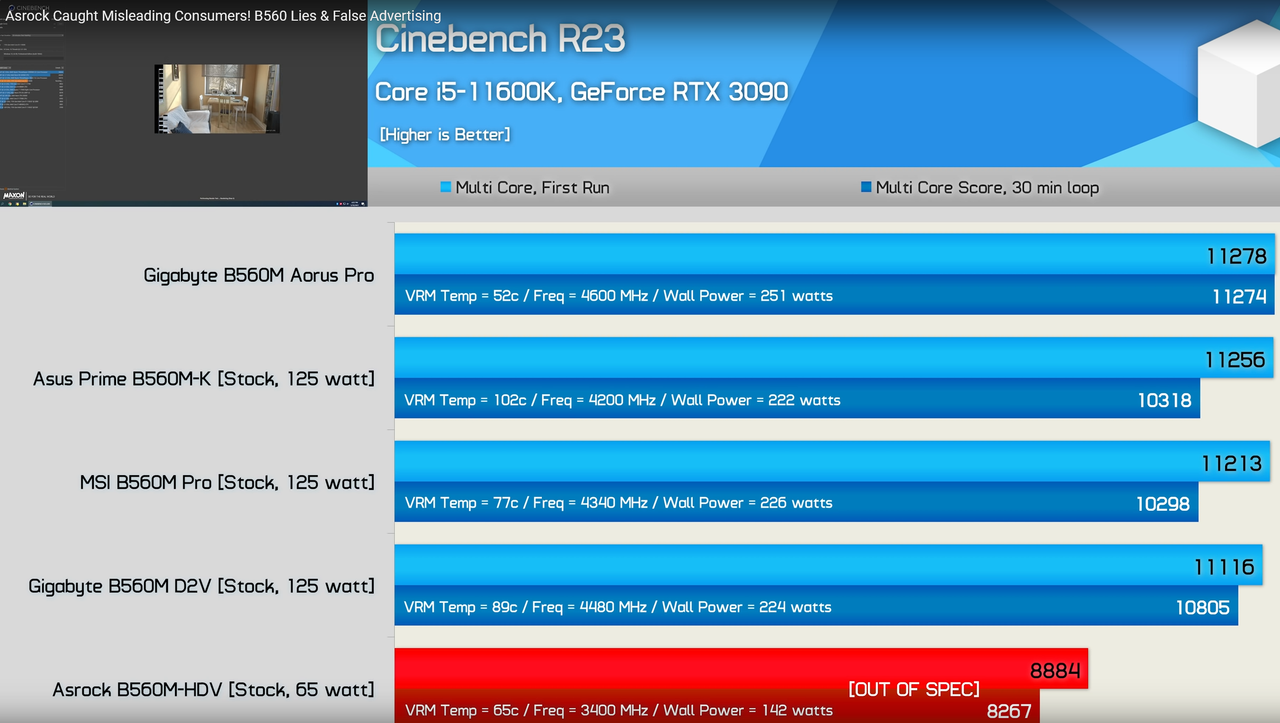It's kind of a grey area, if there is a high-end CPU in the board (unlikely, but eh) then even changing the settings won't save you.It would have been better presented as an informative video showing what settings need to be changed to unlock the TDP on budget boards which seem to have these turned off by default rather than the "OMG your losing 30% performance" as its only a setting just like XMP which most users are capable of entering the bios and enabling so long as they know about it.
As an advocate for buyers, I think he has a point that this whole thing is a mess. XMP is very well established and cheap boards don't crap out with < 3600 memory, but this power PL1/PL2 is a different story because of the impact on performance and VRMs. The low-end boards are unsuitable for running a 11700 or 11900, at least if the intention is to match what performance is seen in reviews. The B550 boards don't generally have this problem with high-end CPUs, because the gap in their power usage to achieve apparently 'stock' performance isn't so extreme.




